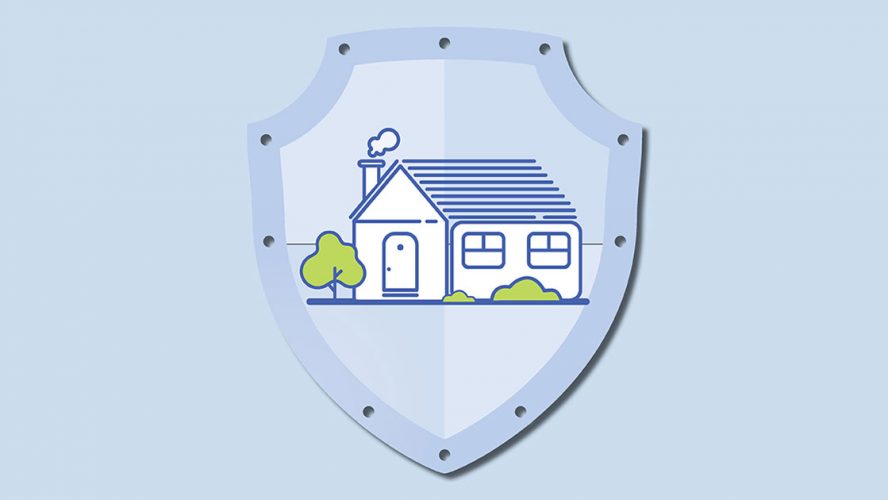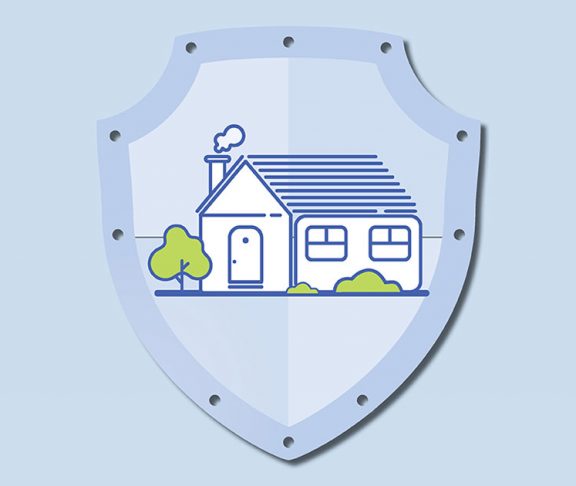FORTIFIED is attainable next-level disaster protection when re-roofing or building a new home.

Julie Shiyou-Woodard
President and CEO, Smart Home America
Many people hear the word fortified and think about castles from a bygone era or the cereal they eat for breakfast. However, for over 30,000 homeowners across the United States, FORTIFIED means strength, safety, and savings. Homes can better resist damage from hurricanes, high winds, hail, and even tornadoes. Over 20 years of research and real-world testing have proven that the FORTIFIED Home™ construction standard makes a significant difference to the long-term durability of homes.
Standing strong
FORTIFIED homes withstood category five Hurricane Michael. During Hurricane Sally, approximately 95 percent of the 17,000 FORTIFIED homes that weathered the storm in Alabama had little to no damage. Those homeowners were not displaced, had no insurance claims, and saved up to 55 percent on their insurance for owning a FORTIFIED home.
With the number of people at risk from increasing extreme weather, we need more FORTIFIED homes across the county. Some local governments are already stepping up. Since being devastated by Hurricanes Ivan and Katrina, over 70 percent of coastal Alabama has added FORTIFIED to their building codes using a code supplement or ordinance.
However, coastal areas are not the only places that benefit from better construction. Inland areas at risk of high winds, tornadoes, Derechos, and hail benefit, too. Inland areas use the FORTIFIED high wind standard, while coastal regions use the hurricane standard. Homeowners in any location can add a hail supplement to provide added impact protection.
Existing homes can easily be upgraded with a FORTIFIED Roof™ in three easy steps. The first is to use ring-shank nails to double the roof’s strength. Then a sealed roof deck prevents water from pouring in when the roof covering is lost. Finally, a high wind-rated roof covering and attic vents keep wind-driven rain out.
New homes can be made highly durable using the FORTIFIED Gold™ standard. The continuous load path used in FORTIFIED Gold ensures the roof is tied to walls, and the walls are tied to the foundation allowing the home to withstand greater winds.
FORTIFIED also reinforces windows and doors, including garage doors, to prevent the house from pressurizing, which can cause catastrophic damage. Created by the Insurance Institute for Business and Home Safety, FORTIFIED improves the performance of buildings and reduces the risk of personal property losses. FORTIFIED is not disaster-proof, but it is next-level disaster protection.
Getting up to code
There are three levels of FORTIFIED designation – Roof, Silver, and Gold. FORTIFIED starts with the roof, the most vulnerable part of any building. Homeowners must ensure their contractor or roofer works with a FORTIFIED Evaluator™ to document and verify all aspects of construction. At the end of construction, a designation certificate is issued.
Many benefits come with a FORTIFIED designation. Insurance companies may offer discounts, sometimes called mitigation credits. Discounts vary but can be up to 35 percent for a FORTIFIED roof and 55% for a FORTIFIED Gold home. Federal and state entities recognize FORTIFIED. State tax deductions and credits are also available. The Small Business Administration will increase a loan up to 20 percent for home and business owners who rebuild to FORTIFIED standards after a disaster.
FEMA’s P-804 Wind Retrofit Guide for Residential Buildings is FORTIFIED in Federal form, allowing communities to qualify for predetermined benefits. Several states also offer grant programs to help residents get a FORTIFIED roof, including Alabama, North Carolina, and South Carolina. Nonprofit builders Habitat for Humanity and SBP also use FORTIFIED across the country to protect their home buyers better. FORTIFIED works. It’s attainable and effective at all price points, and it’s needed now more than ever.

